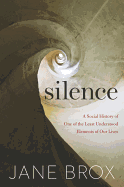
For some of us, silence is a state we strive to reach--an escape from the noise of the modern world and an opportunity for contemplation. For others, silence is something we avoid, preferring activity and distraction to being alone with our thoughts. Both are manifestations of how silence has been viewed through history: either a way to achieve enlightenment or a means to instill punishment.
In Silence, Jane Brox (Brilliant: The Evolution of Artificial Light) considers how silence and solitude can be a source of "growth and despair" through a dual history of the penitentiary and the monastery. Benjamin Rush, a social reformer and signer of the Declaration of Independence, was perhaps America's earliest criminal justice reformer. Rush sought to "replace the hangings, brandings, and whippings of its colonial past" with redemptive "silent and separate" incarceration rooted in Quaker ideology. Over time, this would give way to solitary confinement as the ultimate punishment for a prisoner, using sound as a menace rather than a comfort. Brox also reflects on the power of monastic silence for those with a religious calling. Unlike the penitentiary, silence in the monastery is communal, sacred and infused with rituals. Every sound, no matter how simple, like the clanging of a bell, is imbued with meaning because it is intentional.
Through two figures--Charles Williams, an African American farmer who was the first prisoner at Philadelphia's Eastern State Penitentiary, and Thomas Merton, the Trappist monk whose renowned autobiography The Seven Storey Mountain detailed, then interrupted, his life of solitude--Brox illustrates the dual perspectives of silence as a source of peace or penance. --Frank Brasile, librarian

